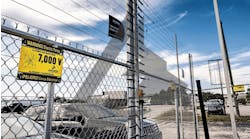We spent quite a bit of time and energy last year working on improving leadership skills and employee engagement. We believe that no matter how great our processes are, and how well they are documented and taught to existing and new employees, we can’t make real sustainable progress on implementation unless our co-workers are actively engaged with us every day when they come to work.
Tons of research and studies have been conducted on employee engagement. Gallup has polled employees on this topic since 2000. Gallup published the results of the most recent poll and what was found is that most employers have employees that fall into one of these three categories:
- 31.5 percent of those polled are engaged employees. Gallup defines these folks as involved in, enthusiastic about, and committed to their work and workplace. I look at this group and see people that are passionate about their work and deeply committed to the company and its mission.
- 51.0 percent of employees polled are not engaged. These folks are showing up to work and doing just enough to get by every day. They have essentially checked out, or as I like to think of it, they’ve already quit but we keep giving them a paycheck.
- 17.5 percent of those polled are actively disengaged. These employees are unhappy at work and act on their unhappiness by driving away customers, disrupting co-workers and undermining all the work that leadership and engaged employees try to accomplish. I refer to this group as terrorists in the organization because they actively attempt to undermine and damage the company.
Group No. 2, the not engaged group, presents the greatest opportunity to improve your business. The challenge is that a not engaged employee is difficult to identify because they really don’t draw attention to themselves. They are neither passionate about their work, nor are they disruptive enough to be noticed. They generally aren’t conscientious of their customers, they don’t meet production goals, they don’t necessarily care about profitability, quality and safety.
You’ve probably done business with companies that have a large percentage of engaged employees. Some companies that come to my mind are Southwest Airlines, Hawaiian Airlines and Apple.
Southwest Airlines has long had a culture of employee engagement and many of us have stories of just how genuine and passionate the employees are at Southwest. The flight attendants are helpful, friendly and funny compared to their counterparts at some legacy airlines. Gate agents actually anticipate the needs of passengers whose flights are delayed and connections are missed. Almost all airlines do the same job: they get you from point A to point B in a safe manner. But the customer experience is vastly different when you travel with the companies with engaged employees. Oh, and by the way, both these airlines have thousands of applicants who are on a hiring waiting list and the airline is profitable.
Apple has engaged employees and lots of them. They’ve managed to create an almost cult-like following when it comes to the customer experience. Go visit an Apple store and see what kind of people work there. The associates at Apple love the products they show. They own them for personal use and are so happy to share their knowledge about the products that customers are genuinely impressed.
The good news is that converting group No. 2 employees into engaged employees will drive your business forward by increasing profitability and growing market share. The effect of engagement on key business outcomes as measured by Gallup is striking. When compared to companies with low engagement scores, companies with high percentages of engaged employees had 20 percent higher sales and 21 percent higher profits. Their CSI scores are 10 points higher and their productivity is better by 17 percent. Other measurable business outcomes showed that engaged workforces had 41 percent less absenteeism, 70 percent fewer safety incidents, 40 percent fewer quality defects, and a whopping 59 percent less employee turnover rate.
Creating a culture of employee engagement takes a lot of work. Each employee is unique so there is no cookie-cutter approach that can be used, but there are some fundamental strategies that you can deploy in your company and I will share some of these in future columns. For now, consider these two foundational concepts as the platform for beginning your journey toward creating a highly engaged workplace. First, you must have respect for humans and secondly, you must know your people.
For some of us, these foundational concepts will require a major paradigm shift in our way of thinking about people. Paradigms can be thought of as mind maps that we’ve constructed over our lifetimes and one of our first tasks will be to make sure our maps are taking us to the place we want to get to.a





